Our reforestation program plants millions of trees each year following disturbances, but did you know that disturbances can also be beneficial for forests and wildlife?
Roughly defined, a disturbance is any event that disrupts an ecosystem or population and changes resource availability and the physical environment. Disturbances can be minor or catastrophic, ranging from a falling tree to a severe wildfire, and ensuing changes can provide habitat complexity, support diversity, and influence ecosystem functioning. Many species of wildlife are adapted to disturbances. For instance, wildfire can enhance nesting and foraging opportunities for several birds, such as the black-backed woodpecker, which can more easily snatch wood-boring beetle larvae out of burned trees.
Disturbances also create new habitats, such as snags - standing dead or living trees with dead sections, created by events such as a strong windstorm, lighting strike, or wildfire. Snags and fallen snags, or logs, are important for many types of wildlife, and they’re essential for some species.
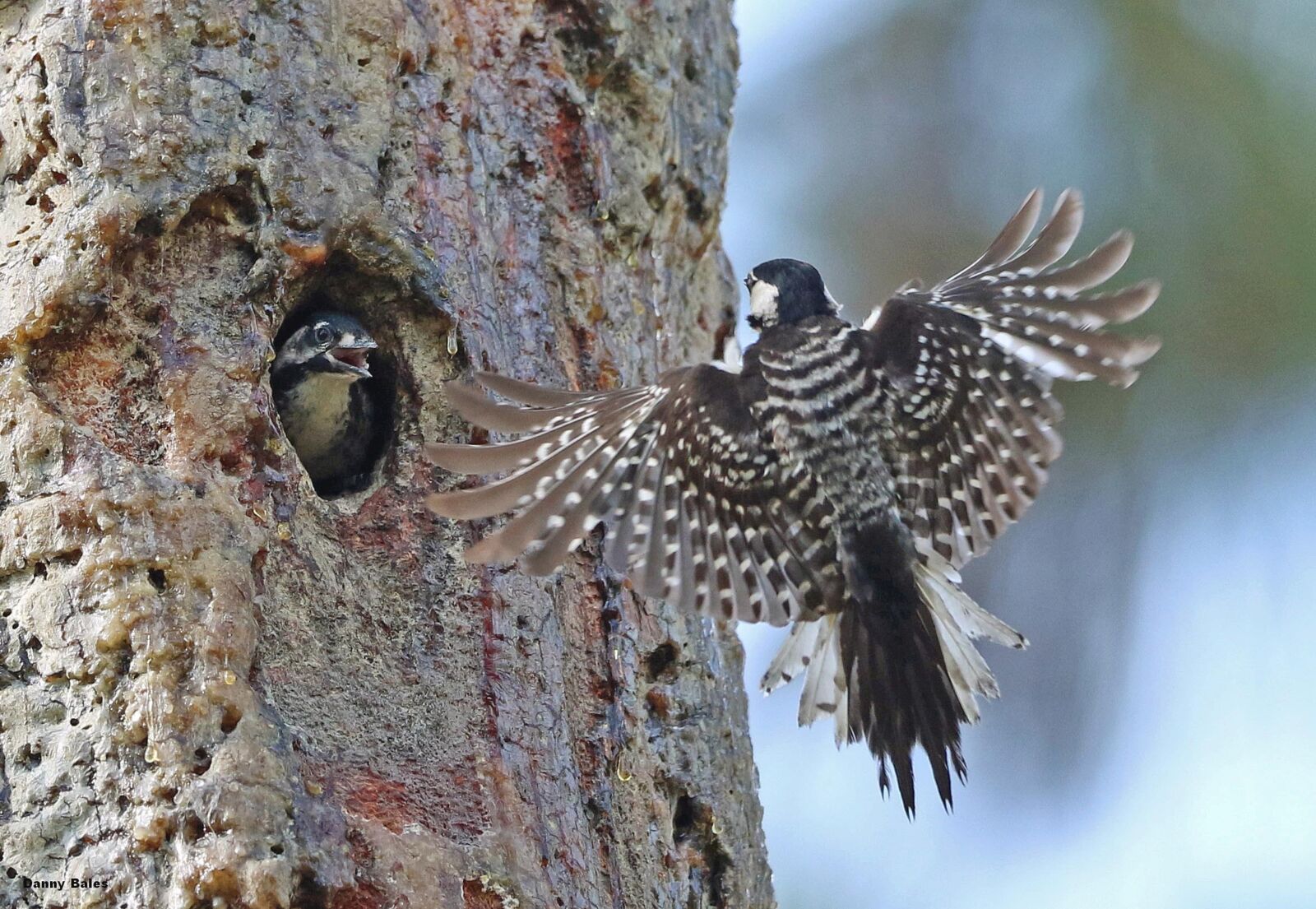
Photo by Danny Bales
When a snag is created, the tree’s tissue is damaged and the decaying wood is soon colonized by insects and fungi, excellent food for woodpeckers and other animals. Woodpeckers, like the hairy woodpecker, are “primary” excavators that use their beaks to drill hollow cavities in the hard heartwood during nesting and courtship displays. When the hard wood decays further and softens, soft wood loving primary excavators, nuthatches, for example, lightly chip away new cavities in search of their prey, creating larger cavities in the snag.
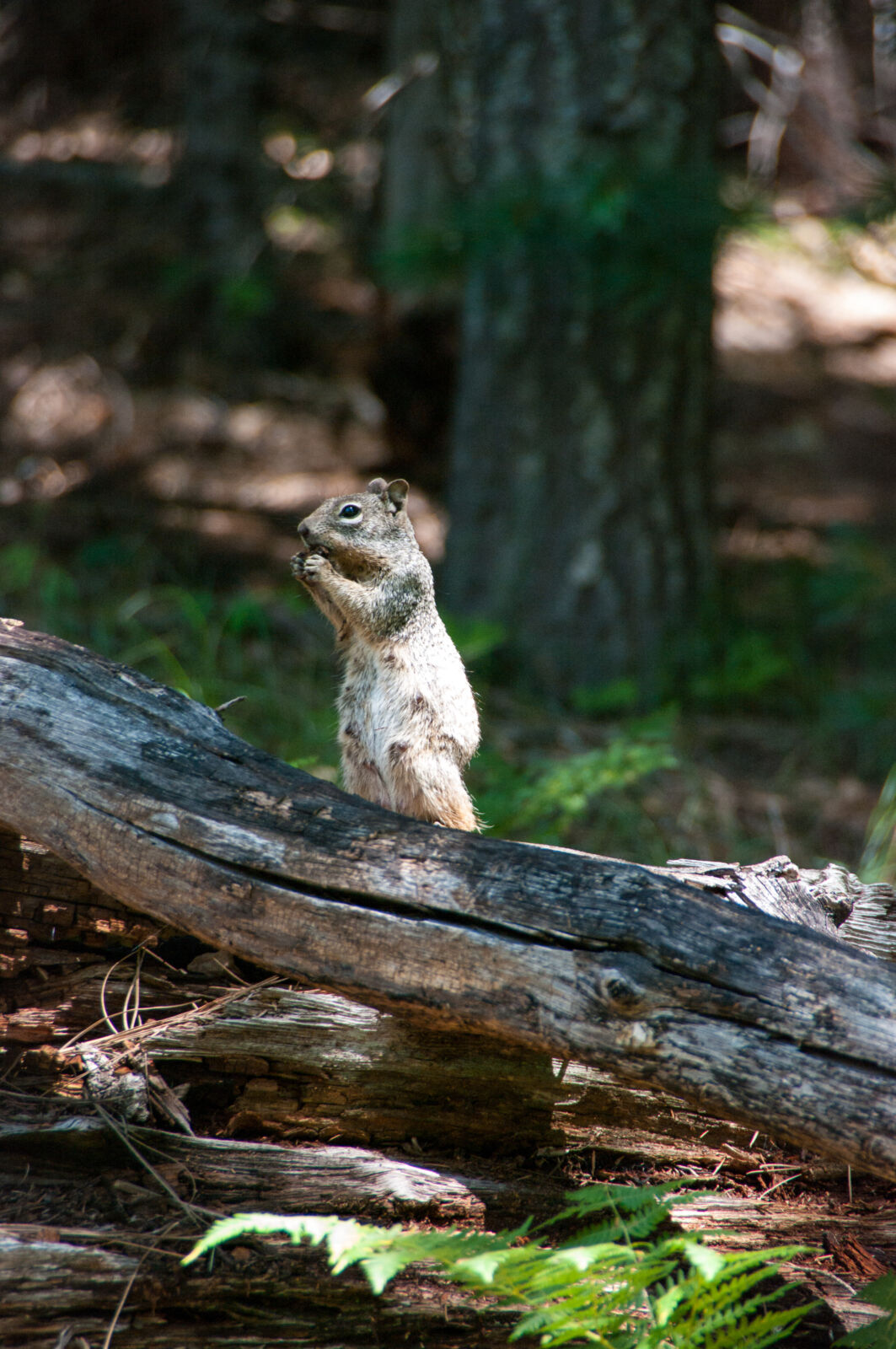
Photo by Deborah Lee Soltesz
Cavities built by primary excavators are then used by secondary cavity nesters. These animals cannot build their own cavities but depend on them for nesting, roosting, and other essential activities. Primary excavators are thus keystone species since they create necessary habitat for other types of wildlife.
Secondary cavity nesters can include owls, small falcons, ducks, northern flying squirrels, and several species of bats. Reptiles, amphibians and some mammals, including black bears, porcupines and rodents, use snag and stump cavities opportunistically as nesting habitat and cover from predators. Larger animals, like bears, use large cavities made from decay or wildfire, as bird-built cavities are too small. But prey species beware! Predators, like snakes, also use snags and cavities to find their quarry.
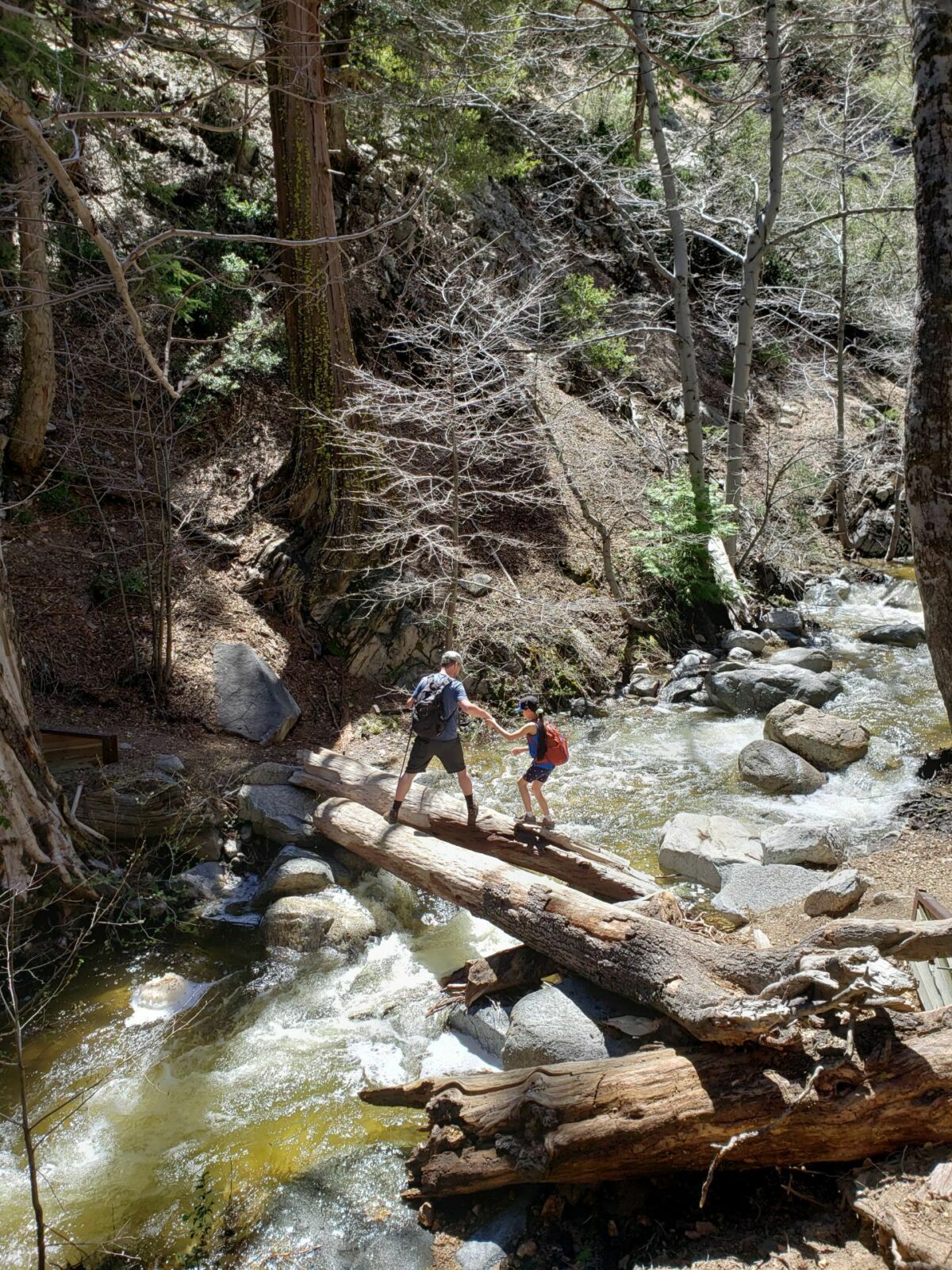
Downed logs also make great bridges! (Photo by Gary Walker)
Snags and woody debris can also improve and add complexity to aquatic habitats, and in nature, complexity is beneficial. When trees or logs fall into streams and rivers, they create dams and pools, important for young fish. Logs and branches also provide protection and shade, cooling water temperatures. Some species of amphibians, such as the red-legged frog, loosely deposit egg masses on twigs and woody debris, allowing eggs to withstand water level changes and not dry out. And others, such as the northern spring salamander, deposit eggs under logs and twigs in flowing water.
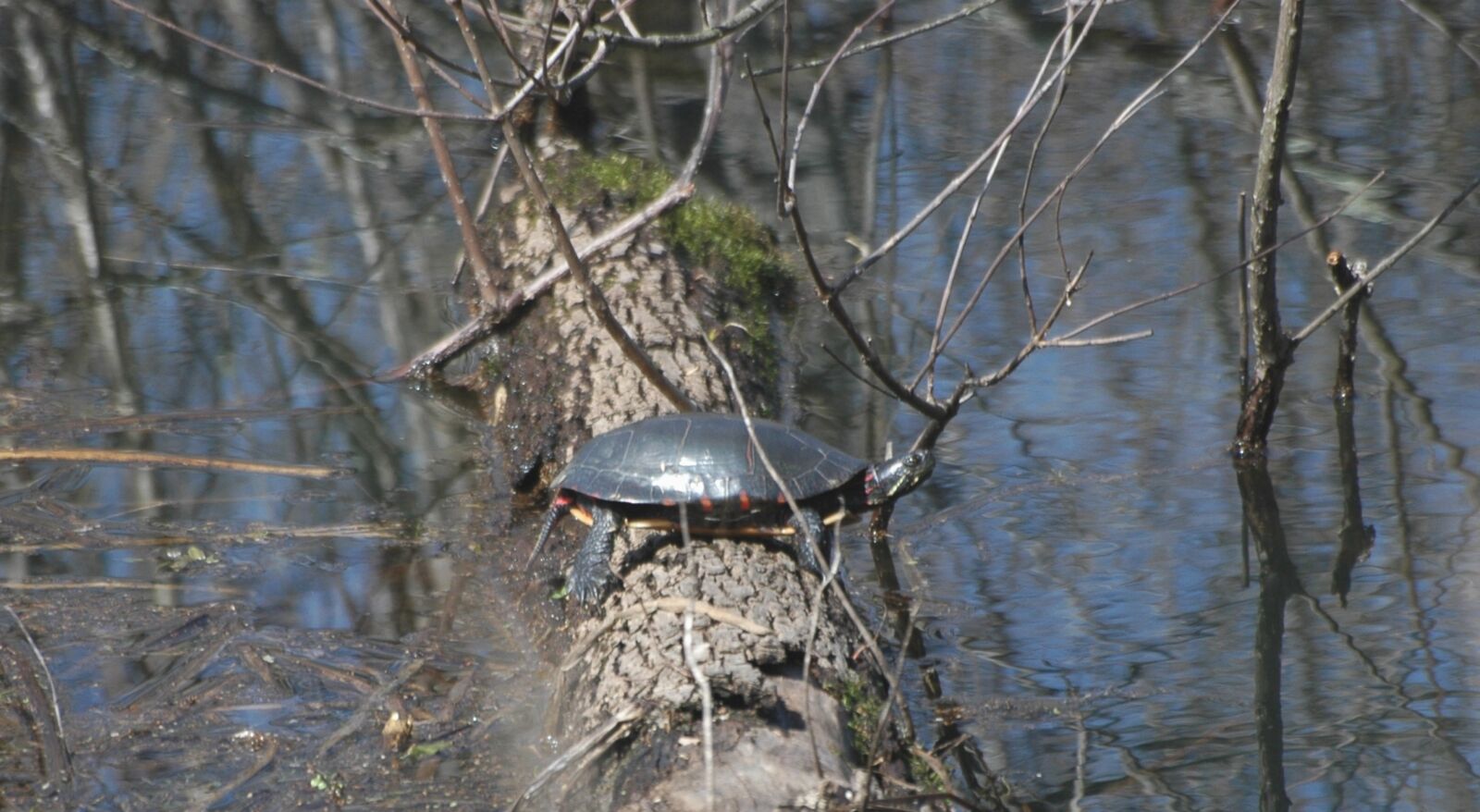
Photo by M Hacquard
Secured logs in open water give turtles a warm basking spot and floating logs can provide safe roosting sites for mammals like beavers and minks. Near the water’s edge, birds like osprey and bald eagles use snags as lookouts to find and catch aquatic prey.
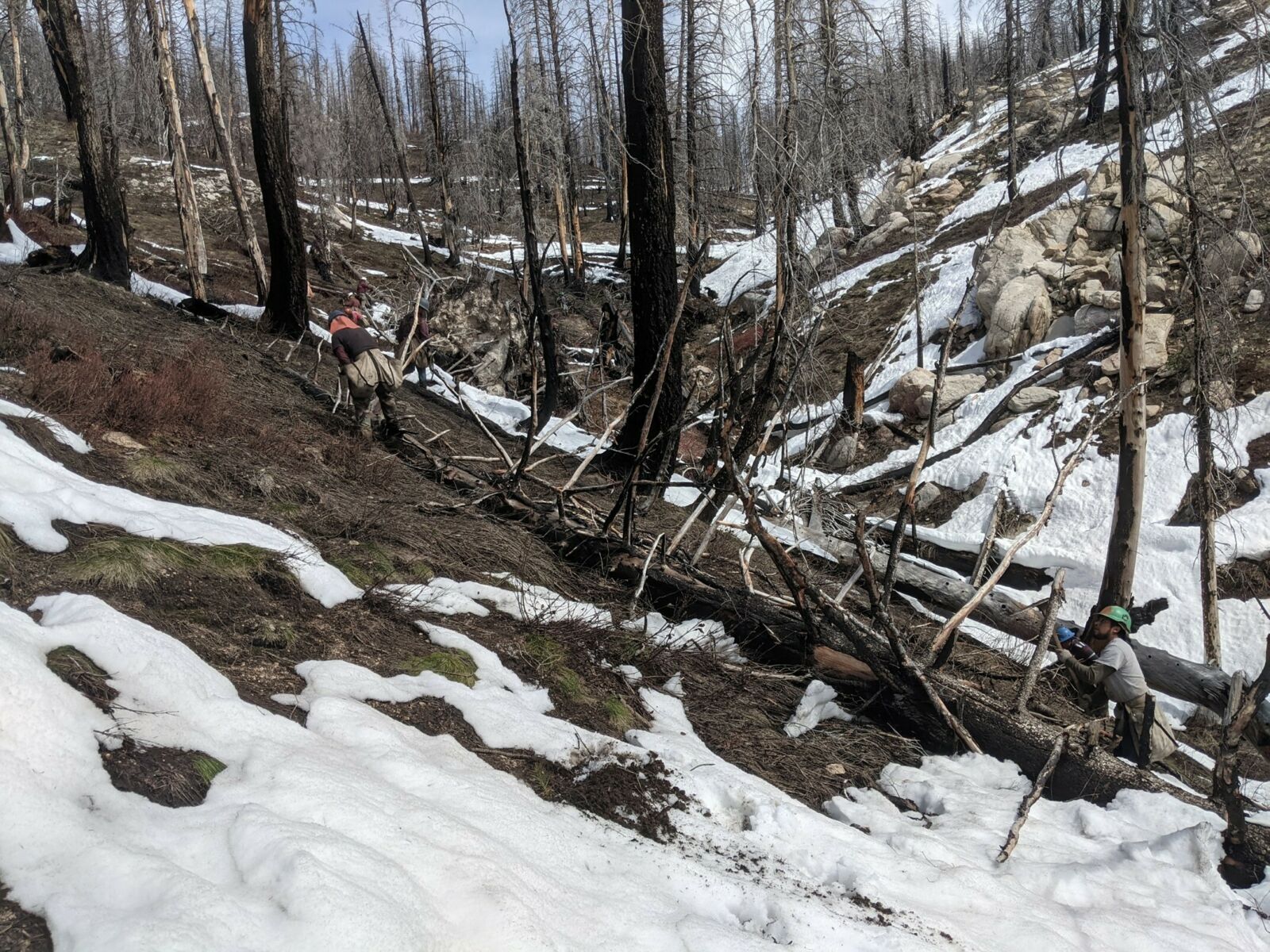
Tree planters using a downed log as a planting microsite on Boise National Forest, Idaho
Back on the forest floor, snags and logs provide additional benefits. When reforesting National Forests, planters use fallen logs as microsites to shelter newly planted seedlings and provide shade. And organic, decomposing wood and leaves aid the growth of fungi, lichen, and mosses – all food sources for many herbivores like deer. Log decomposition also adds nutrients to the soil, contributing to the global carbon cycle and providing fertile ground for forest renewal.

